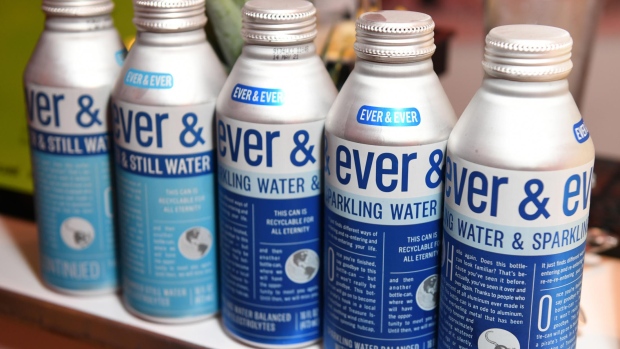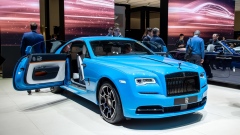Jun 24, 2019
No, canned water will not save the planet
, Bloomberg News

In early June, the Museum of Plastic appeared in New York’s SoHo. Created to highlight the problem of ocean plastic, the space featured such exhibits as a giant receipt for US$200 billion—the projected revenue for water in plastic bottles by 2022—listing other uses for the money, such as paying off the Fyre Festival debt.
The pop-up was a marketing campaign to introduce Ever & Ever, a US$1.99 bottle-shaped aluminum can with a screw-off top filled with soft-tasting water, balanced with electrolytes. The company says it’s coming to Walmart.com and Amazon.com “soon” and then to local convenience stores. It’s just one of a growing number of products being pitched as an alternative to the 50 billion single-use plastic bottles Americans use annually. Those consumers are more concerned about plastic in oceans than climate change, according to a new study by the Shelton Group; 80 per cent said they would buy an alternative to single use plastic if given the option.
It is, of course, absurd that water in any kind of container is touted as an environmental benefit. The only true eco-friendly way to consume water is to drink it from the tap.
“Whether it’s water in bottles that are especially biodegradable, or water in cans, it’s something that’s a little better than plastic but shouldn’t be done at all,” says Peter Glecik, a scientist focused on water and climate issues and co-founder of the Pacific Institute. “Canned water is a marginal improvement over bottled water.” Even if someone created a 100 per cent-recyclable bottle, the impact of transporting water to a packaging plant is notable, as is the packaging.
Ever & Ever is the newest offering from All Market Inc., owners of Vita Coco coconut water. Mike Kirban, AMI co-founder and chief executive officer, conceived of it as a way to neutralize the environmental impact of difficult-to-recycle tetra-pack packaging: The company estimates it sells around 1.2 million containers of coconut water a day, mostly in the material. Ever & Ever cans, however, are made of recycled aluminum and are easy to refill with water. Still, they aren’t dishwasher-safe or designed to be re-used indefinitely.
“Is it better to use a re-useable water bottle?” asks Kirban. “Yes, of course it is, but it’s not where consumers are. Tap water isn’t always an option. Practicality is a reality.”
Canned water is having a moment in the U.S. Liquid Death, from former Netflix executive Mike Cessario, has raised US$1.6 million in seed funding, using the tagline “Murder your thirst.” It’s a breakout hit with an audience that wants to drink water out of a tallboy beer can. Aquaman’s Jason Momoa introduced Mana Nalu and shaved his beard in a viral video to bring attention to oceanic plastic.
“Every brand is going to speak to a different audience and have a different message associated with it. For us, we want to make sure there’s an ocean,” said Dune Ives, executive director of the ocean activist group Lonely Whale, which helped develop Ever & Ever with AMI. While aluminum cans aren’t going to save the world, Ives argues they will help alleviate a problem. While about 91 per cent of plastic ends up as waste, 67 per cent of aluminum cans are recycled, worldwide. “If you’re counting on one person to save the planet, you will be disappointed,” she said. Meanwhile, AMI is turning its attention to another product in an emerging space: Sparkling Vita Coco infused with hemp, in flavors like ginger-apple and lemon-cardamom, will be available early in August—in cans.




